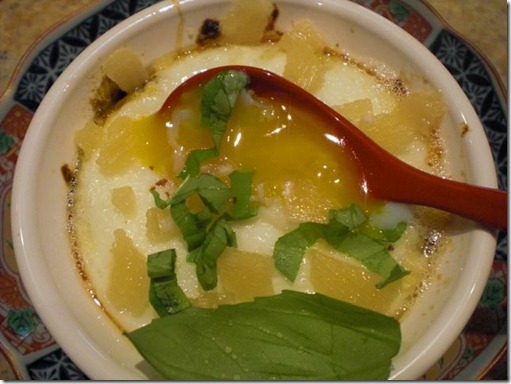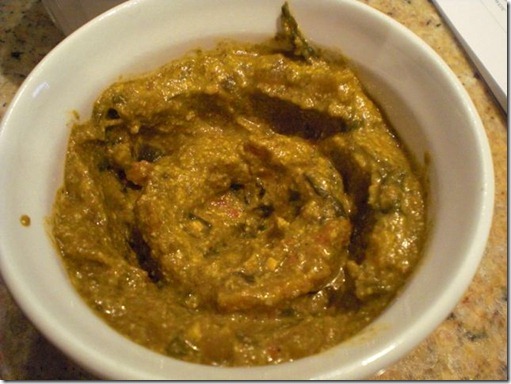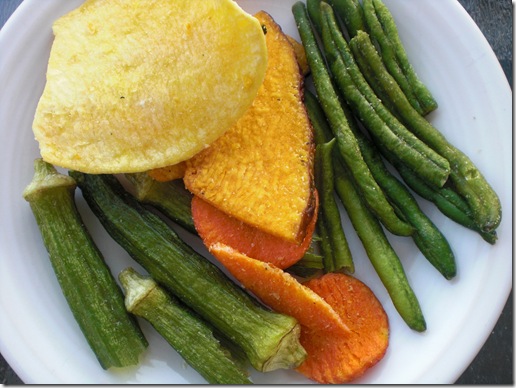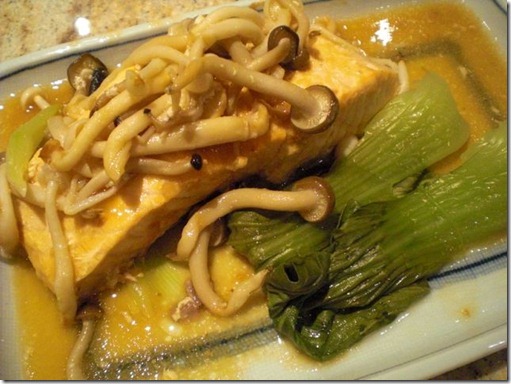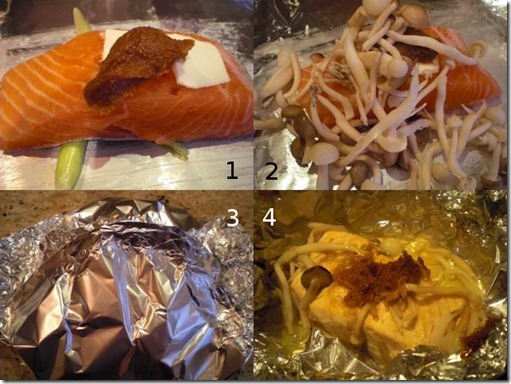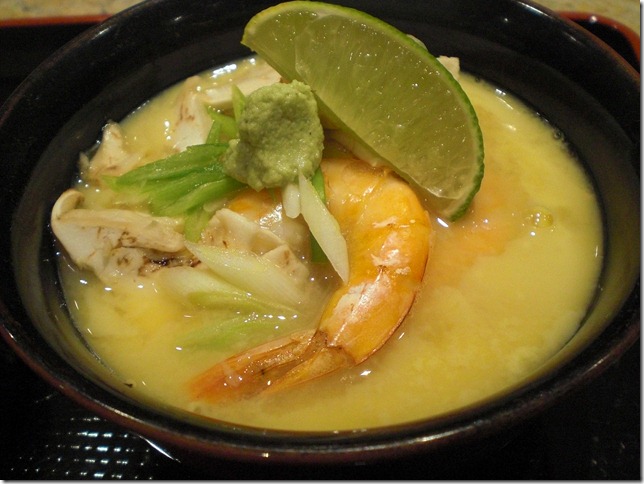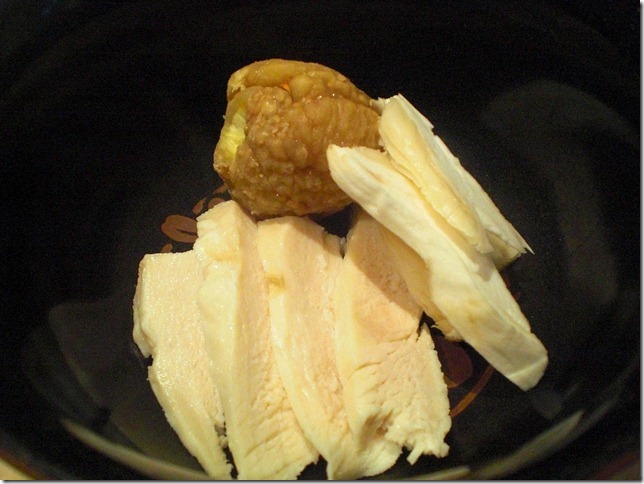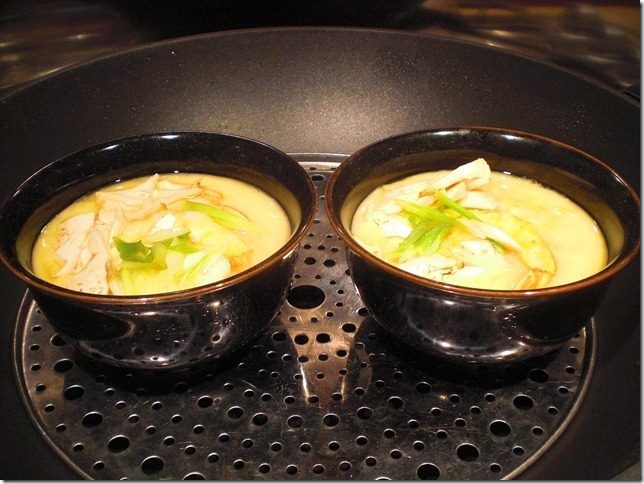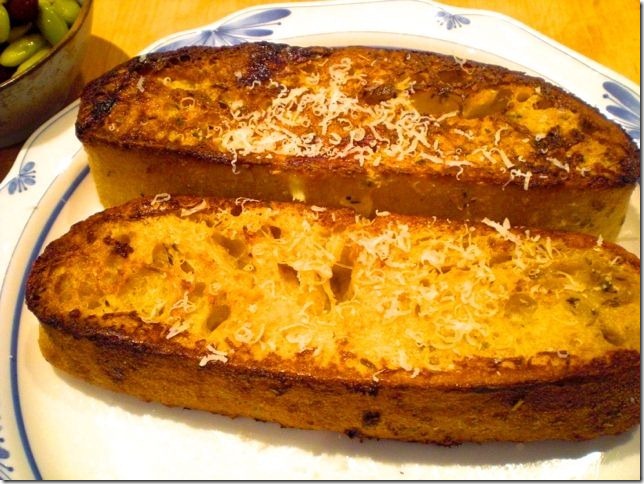
Bread: We used two thick slices of store-bought semolina loaf.
Egg mixture: For two slices like above, we used two whole eggs, cream (2 tbs), Sriracha hot sauce (to your taste) and salt (1/4 tsp).
In a shallow pan, which was just large enough to accommodate two slices of bread, we place the bread slices and poured over the egg mixture. Turning once, to coat. Then we placed it in the refrigerator over night so that the bread could totally absorb the egg mixture.
Next morning, I fried the bread in melted butter in a frying pan until both sides were browned and finished it in a 350F preheated oven for 10-15 minutes or until the center of the bread was cooked.
We grated Parmigiano-Riggiano cheese on the top. This turned out pretty well. It is a slightly hot (egg and cream tamed the heat from the hot sauce) but savory French toast. The bread was crunchy on the outside but moist (almost like bread pudding) on the inside. We actually prefer this to the more traditional sweet French toast. We also enjoyed the leftover French toast as a drinking snack by cutting it into bite-sized cubes and toasting it before serving. My wife says the success of this dish opens wide vistas of possibility for variations on this theme…oops!

